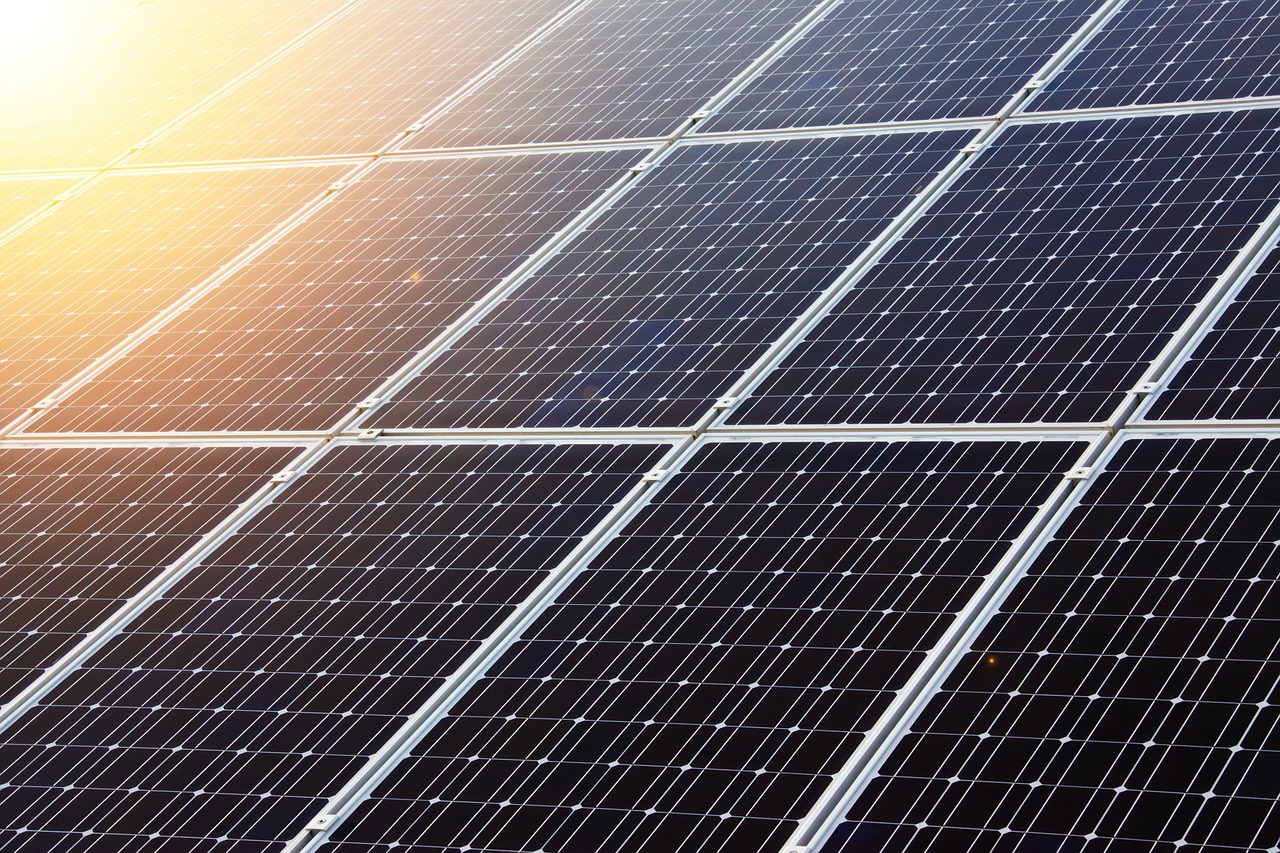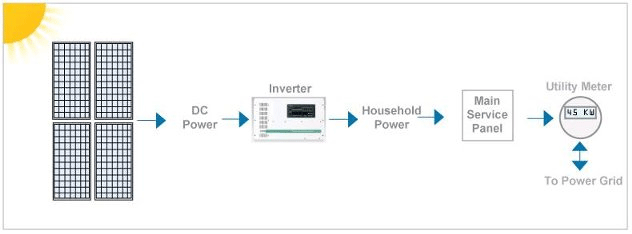I have no idea how the sun will make my house stuff work?
This is the most frequently asked question.
We are here to help answer that question at PA Michael Solar-Electric.
What does PV stand for?
Photo Voltaic. This refers to the ability of solar modules to transform light, photons, into electricity which has the characteristics of voltage and current.
What are some advantages of solar energy?
After the initial investment in solar-energy equipment, the costs are minimal since the components are relatively maintenance free and the sun provides all the energy. Solar energy offers a way to avoid the volatile costs of electricity provided by local utilities (as the price of coal and natural gas continue to rise). Solar energy is a way of harnessing the most abundant fuel supply the earth has and promotes energy independence. Solar energy produces no toxic chemicals, emits no pollution, and consumes no water.
What is a residential solar electric system?
A residential solar electric system allows you to generate your own electricity at home. The pre-packaged systems are designed either to interconnect with your existing utility service or act in a stand-alone (off-grid) environment. These solar packages include solar modules, inverters, wiring, and mounting kits. Off-grid packages will also include batteries and charge controllers. A licensed electrician will be required to ensure the wiring is handled appropriately.
What are the components required for a PV system?
- Solar modules – sometimes also called solar panels.
- A location of sufficient size for the modules and which receives sunlight most of the day. A mechanical mounting system to hold the modules in place there.
- An inverter which changes the direct current (DC) electricity from the modules into alternating current (AC) compatible with that delivered by the utility company.
- Safety switches which are required to allow maintenance on the system.
- Wiring to connect the components together. Some portions will be in protective conduit.

What is net metering?
Utilities are required to allow customers to connect PV systems to their delivery lines. When the PV system produces more electricity than is used, the electric meter will run backwards. When more electricity is used, the electric meter runs forward. The customer pays based on the net amount of electricity used.
How are solar panels mounted?
There are three types of mounting methods commonly used. In order of increasing cost and complexity are roof mount, ground mount and pole mount. The mounting method is generally chosen to achieve good exposure to the sun or to match the architecture of the installation site.
Roof Mount
For composite shingle roofs, brackets are attached through the shingles to the rafters below. Aluminum rails mount to the brackets and the solar modules in turn mount to the rail. Most modern houses have rafters on 24 inch centers and are able to support the additional weight of the mounts plus modules. Older houses may need reinforcement of the rafters.
Tile and slate roofs require more complicated mounting and are therefore more expensive, but solar modules which take the place of slate are available and provide a very esthetically pleasing installation. For flat roofs, as commonly found on commercial buildings, a free-standing ballasted design is available which avoids any penetrations of the roof.
Ground Mount
The base of a ground mounted system is a number of concrete piers. For stability, the pier extends below the depth of the frost line, which depends on climate. Metal racking attaches to the piers and provides a stable mounting surface for the solar modules. The ground mount has flexibility in placement for best solar exposure and aesthetic appeal, although, since wires must carry the electricity generated by the modules to the house, it is most efficient and economical to install the ground mount close to the building it will supply.
Speciality Structure Mounting
Solar structures do not need to be an eye sore. In fact, a speciality structure can be masterfully designed to enhance the sheer beauty of Solar power. They can be as simple as a canopy over windows, a back yard shade structure, a car port cover, a cabana around a pool area, a porch or patio. Or they can be designed as an architectural component of a building, or a pole mounted flower. Don’t be stuck with one choice of an industrial looking structure in the yard. Useful storage structures can have a dual purpose by supporting solar modules along with it’s other functions.
Pole Mount
Pole mount systems are used to avoid shading or where for placement reasons the modules should be elevated. A large diameter steel pole embedded in concrete provides the stability needed to withstand wind loads.
Will my system work on cloudy days?
Yes, though solar panels produce less electricity when there is less sunlight. Under a light overcast sky, panels might produce about half as much as under full sun. If you are consuming more electricity than the solar panels are producing, the extra power must be provided by the local utility or battery backups (depending on the type of system).
What happens during a power outage?
There are two standard ways of designing and building solar residential systems. One type of system is referred to as a “grid-tied” system. A grid-tied system powers your home during daylight hours, has no battery storage, and relies on electricity from your local utility when there is little sunlight. Another type of system is referred to as being “off-grid”. This type of system is not connected to the electric supply provided by the local utility. Off-grid systems power your home during daylight hours, but also have a battery backup designed to provide power to your home’s critical loads, day or night. If the local utility experiences a power outage on a clear day, there will be no disruption of service. If the power outage happens when sunlight is minimal, only systems with battery backup will be able to continue providing electricity.
Do I need batteries?
If you’re considering including batteries in your grid-tied Solar system,
ask yourself three questions:
- How often does the grid go down at my site?
- How long does a typical utility outage last?
- How much do blackouts affect my lifestyle?
In most places, the utility grid is quite reliable and power outages are infrequent and short in duration. Exceptions are most likely in rural areas that have a lot of overhead power lines and experience regular wind or ice storms. In these situations, grid failures can be both frequent and long in duration—the power company isn’t going to prioritize repairing a downed line that services only a dozen families over one in town that services hundreds. The duration of the power outages you experience is more important to consider than frequency. However, if you work from home and need reliable electricity, frequent or long-lasting power outages can significantly impact your productivity. In this case, a battery-based Solar electric system is an excellent option.
How much does a PV system cost?
Right now, federal state incentives are available to encourage homeowners to install these systems. The cost of the electricity generated is competitive in price to current utility rates. Furthermore, a PV system will keep generating electricity for the next 25 years while the price of electricity from the utility will continue to rise. Some immeasurable benefits are the fact that the power generated by the PV system does not cause pollution like that generated by the utility and the PV systems help reduce our country’s reliance on foreign oil.
Pricing for an individual system depends on the mounting method and size of the system installed. The amount of reduction in an individual utility bull will also depend on a number of factors such as level of insulation, type of appliances, and lighting. Also due to the rapidly growing popularity of PV systems, the price and availability of solar modules has been rising. For these reasons, it is necessary to treat each situation individually. Please give us a call.
How long do photovoltaic systems last?
A PV system that is designed, installed, and maintained well are typically guaranteed for up to 25 years. The best way to ensure and extend the life and effectiveness of your PV system is to have it installed and maintained according to the manufacturer’s guidelines. Systems installed by these guidelines are built to last 50 years.
How does the process work?
Consultation Phase
The first step is to call or stop by our office and speak to one of our experts to find out if Solar Electricity is a viable option for you. You can also fill out our online free site visit survey and someone will contact you shortly.
Site Visit Phase
All systems are unique and need to be built to your particular requirements. For this reason we will need to come to your home or place of business to measure the available solar access, roof and/or ground mount areas and look at your mechanical and electrical systems. If you are looking at installing a Solar Electric system as part of a new construction project we recommend a visit to of our office to meet with our design & engineering experts to look over your project blueprints and discuss your plans. Site visits and office visits are always free of charge.
Design Phase
To get the most out of your investment in solar, the system must be accurately designed. The first step is to take into account the particular constraints of your location and then correlate that data with the specifications of the various hardware components to come up with a system that makes the most out of your solar resource and best realizes your goals. At the end of the design phase you will have a completely designed system including one-line drawings, system specifications, and a final estimate.
Installation Phase
Once permits are issued and all system components are assembled, we will begin your installation. All aspects of every job are completed to the highest standards of quality and precision. We guarantee our workmanship for the lifetime of every system we install.
The end result of the process will be a beautiful, fully operational renewable energy system that will provide clean, renewable energy for years to come!